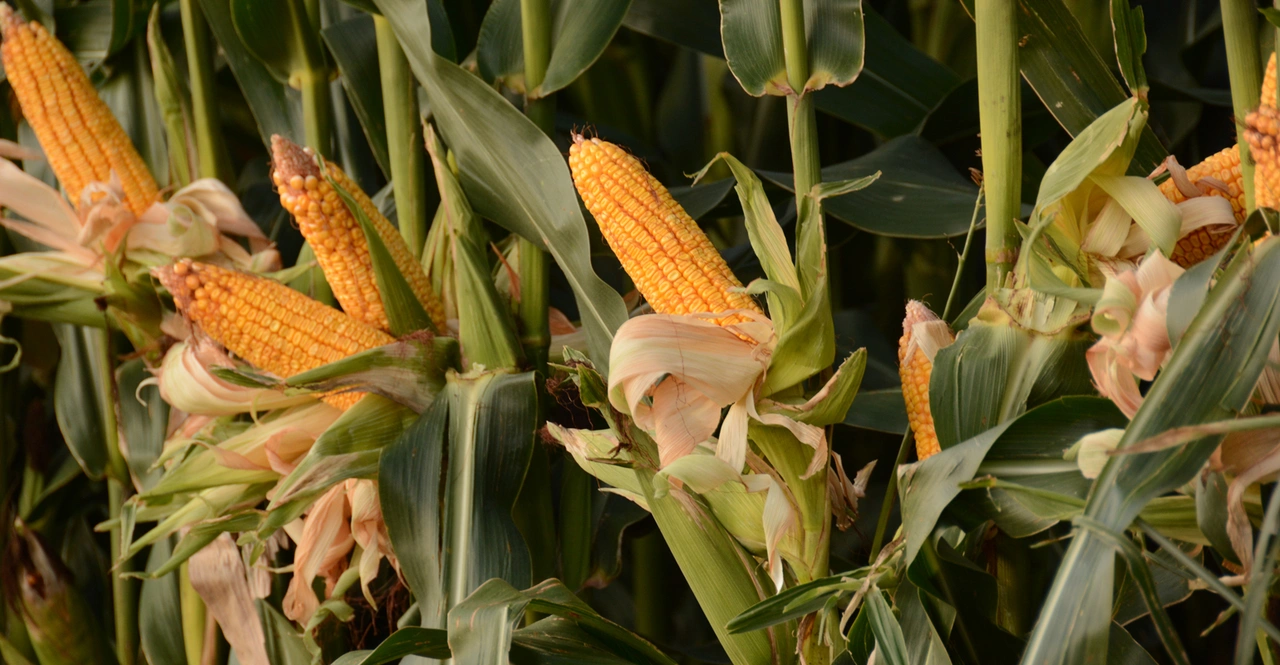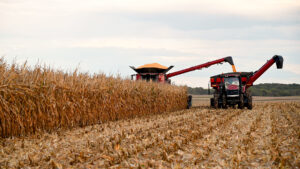Maximizing Your Corn Yield: A Comprehensive Guide to the Corn Yield Calculator
Looks like you’re a green thumb 🌱 eager to optimize your garden or farm space! Welcome to your very own vegetable planting guide, featuring a specialized corn yield calculator designed to help you estimate your crop yield based on the space you have and the optimal planting strategies.
Corn Yield Calculator
🌽 You will need the results of a 1/1000 acre sample to use this calculator.
| Corn Yield Input | |
|---|---|
| Kernels per ear: | |
| Ears in a sample: | |
| Size of the field (acre): | |
| Size of the kernels: | |
| Results | |
| Yield per acre (bushels): | 0 |
| Total yield (bushels): | 0 |
Why Use a Corn Yield Calculator?
This handy tool is perfect for anyone looking to make the most of their gardening efforts. Whether you’re a seasoned gardener or a novice, the corn yield calculator can assist you in determining how best to utilize your land. It’s particularly beneficial during times when you’re home more often—what better way to stay engaged than by nurturing a garden? With a little effort, you could harvest a bounty of fresh corn right from your backyard! 😋
How to Use the Corn Yield Calculator to Determine Garden Size
Congratulations on deciding to start your own vegetable garden 👏! Now that you’re committed to going green 💚, let’s walk you through using the garden yield calculator effectively:
- Choose Your Crop: Start by selecting corn as your crop of choice!
- Measure Your Space: Input the length of your planting rows.
- Determine Number of Rows: Specify how many rows of corn you wish to plant.
Once you’ve entered this information, the corn yield calculator will provide you with an estimated yield as well as the total area needed for your corn crop. This calculation includes a 1.5-foot gap between rows and along the borders, allowing you enough space to care for your plants comfortably.
Before you dive in, don’t forget to assess your soil quality. Conducting a soil test can provide valuable insights into your garden’s health. Also, be sure to stock up on mulch and fertilizer to give your plants the nutrients they need!
If you’re unsure about how much fertilizer to use, check out our fertilizer calculator. A water-soluble fertilizer might be particularly beneficial for enhancing nutrient absorption.
Calculating corn yield is essential for farmers and gardeners looking to maximize their production and make informed decisions about planting and harvesting. This article will explore various methods and tools for estimating corn yield, including charts, calculators, and formulas that can help you understand and optimize your corn farming efforts.
Calculate Corn Yield Per Acre
The first step in understanding corn yield is calculating the expected yield per acre. This measurement helps farmers assess the efficiency of their farming practices and make decisions for future planting. To calculate corn yield per acre, you can use the following formula:
$$[ \text{Corn Yield (bushels/acre)} = \left( \frac{\text{Number of Ears per Acre} \times \text{Grain Weight per Ear}}{56} \right) ]$$
Where:
- Number of Ears per Acre is the total number of ears harvested.
- Grain Weight per Ear is the weight of the grain from each ear, typically measured in grams.
For example, if you have an average of 30,000 ears per acre and each ear produces 0.5 kg of grain, the calculation would look like this:
$$[ \text{Corn Yield} = \left( \frac{30,000 \times 0.5}{56} \right) \approx 267.86 \text{ bushels/acre} ]$$
This calculation provides a straightforward way to estimate corn yield, helping farmers gauge the effectiveness of their practices.
Pioneer Corn Yield Chart
To aid farmers in estimating their corn yield, many agricultural companies, such as Pioneer, provide yield charts. These charts display historical yield data for various corn hybrids based on factors such as geography, climate, and farming practices. By consulting these charts, farmers can select the most suitable corn variety for their region and understand expected yield ranges.
For example, a Pioneer corn yield chart may show that a specific hybrid produces an average yield of 220 bushels per acre in the Midwest but only 180 bushels per acre in regions with less favorable conditions. This data helps farmers make informed choices about which hybrid to plant based on their local conditions.
Formula to Calculate Corn Yield
The formula for calculating corn yield can vary based on the specific metrics used, but a commonly used formula is:
$$[ \text{Corn Yield} = \frac{\text{(Ears per Acre) × (Grain Weight per Ear)}}{56} ]$$
This formula provides a reliable estimate of potential yield based on the two key factors of ear count and grain weight.
Another method to estimate corn yield incorporates plant population and kernel count per ear:
$$[ \text{Corn Yield} = \frac{\text{(Population × Kernels per Ear × Grain Weight)}}{56 \times 1,000} ]$$
Where:
- Population is the number of plants per acre.
- Kernels per Ear is the average number of kernels harvested from each ear.
This formula allows for adjustments based on plant density and kernel count, providing a more tailored estimate for each specific field.
GDU Calculator by Zip Code
Growing Degree Units (GDUs) are critical for understanding corn growth and development stages. A GDU calculator based on zip code can help farmers determine how many GDUs have accumulated during the growing season. GDUs account for temperature variations that affect corn growth, allowing farmers to predict when their corn will reach maturity.
For example, using a GDU calculator, you might input your zip code to receive localized data on temperature and degree days. This information can guide your planting decisions, helping you choose the optimal time for sowing seeds and maximizing yield potential.
Figuring Corn Yield Chart
When estimating corn yield, farmers often refer to figuring corn yield charts. These charts provide visual representations of yield data based on various conditions, such as planting dates, hybrid types, and regional climates. By analyzing these charts, farmers can identify trends and make decisions that align with their specific circumstances.
For instance, a figuring corn yield chart may illustrate that earlier planting dates correlate with higher yields in certain hybrids. Armed with this information, farmers can adjust their planting schedules to improve their chances of a successful harvest.
Corn Yield Check Calculator
A corn yield check calculator is an essential tool for farmers who want to assess the effectiveness of their corn-growing practices. This type of calculator typically requires input data on ear counts, kernel counts, and weights to estimate potential yields accurately.
Using a corn yield check calculator, you can input the number of ears harvested, the average number of kernels per ear, and the weight of the grain to receive an estimate of your yield. This information can be invaluable in making adjustments to future planting strategies.
For example, if your calculations indicate that your yield is lower than expected, you might consider evaluating factors such as soil health, irrigation practices, or pest management strategies to identify areas for improvement.
Corn Yield Estimate Formula
Estimating corn yield accurately is crucial for farmers to plan their operations effectively. A widely accepted corn yield estimate formula is:
$$[ \text{Estimated Yield (bushels/acre)} = \frac{\text{(Number of Ears per Acre) × (Kernels per Ear) × (Grain Weight per Kernel)}}{56} ]$$
This formula allows farmers to estimate potential yield by considering the number of ears produced, the average kernel count, and the weight of each kernel.
Farmers can adjust their practices based on this estimate, whether that means changing planting density, selecting different hybrids, or enhancing soil fertility.
Corn Yield Formula
The corn yield formula is fundamental for farmers seeking to understand their crop’s potential. A simple yet effective formula to calculate corn yield is:
$$[ \text{Corn Yield} = \frac{\text{(Ears per Acre) × (Average Kernels per Ear) × (Grain Weight per Kernel)}}{56} ]$$
This formula emphasizes the importance of three key factors: the number of ears, kernel count, and weight. By focusing on these elements, farmers can adjust their practices to optimize yield.
Calculating corn yield is essential for maximizing production and making informed agricultural decisions. By using yield charts, calculators, and various formulas, farmers can gain insights into their practices and understand how to improve their yields.
From the initial calculations based on ears and grain weight to more sophisticated GDU assessments, each tool and method provides valuable information to help farmers succeed. Whether you’re a seasoned agricultural professional or a new gardener looking to grow corn, these resources can guide you in achieving your yield goals. By understanding the intricacies of corn yield calculations, you can make more informed decisions that lead to a successful harvest and a fruitful growing season.
frequently asked questions (FAQs) for a Corn Yield Calculator:
1. What is a Corn Yield Calculator?
A Corn Yield Calculator is a tool that helps farmers and gardeners estimate the potential yield of corn based on various input factors, such as the number of kernels per ear, the number of ears in a sample, and the size of the field.
2. How do I use the Corn Yield Calculator?
To use the calculator, input the number of kernels per ear, the number of ears harvested in a sample, the size of your field in acres, and select the size of the kernels (small, medium, or large). Click the “Calculate” button to view your estimated yield per acre and total yield.
3. Why do I need the results of a 1/1000 acre sample?
The results from a 1/1000 acre sample provide a standardized measurement that helps to estimate the total yield of a larger field accurately. This sampling method ensures that the calculations are based on a representative portion of the crop.
4. How is the yield per acre calculated?
Yield per acre is calculated using the formula:
$$[ \text{Yield per Acre (bushels)} = \frac{\text{(Kernels per Ear) × (Ears in Sample) × (Weight per Kernel) × 1000}}{1/1000} ]$$
This takes into account the number of ears, kernels, and the average weight of the kernels based on their size.
5. What factors can affect corn yield estimates?
Factors that can affect corn yield estimates include soil quality, weather conditions, pest and disease pressure, and farming practices. The accuracy of the yield calculator also depends on the accuracy of the input data provided.
6. How can I improve my corn yield?
To improve corn yield, consider practices such as selecting high-yield hybrid varieties, optimizing planting density, ensuring adequate irrigation, using appropriate fertilizers, and implementing pest and weed management strategies.
7. What does the kernel size option mean?
The kernel size option (small, medium, large) refers to the average weight of the kernels harvested. Different sizes can impact the total weight of grain produced, which is why it’s important to select the size that corresponds to your harvested corn.
8. Is this calculator suitable for all corn types?
Yes, the Corn Yield Calculator can be used for various types of corn, including sweet corn, field corn, and popcorn. However, the accuracy of estimates may vary depending on the specific corn variety and growing conditions.
9. Can I use the calculator for different field sizes?
Yes, you can use the calculator for any size field by entering the appropriate size in acres. The calculator will adjust the total yield based on the size you input.
10. What should I do if my yield estimates are lower than expected?
If your yield estimates are lower than expected, consider reviewing your farming practices, such as soil health, irrigation methods, and pest control measures. It may also be helpful to consult local agricultural extension services for tailored advice and recommendations.





